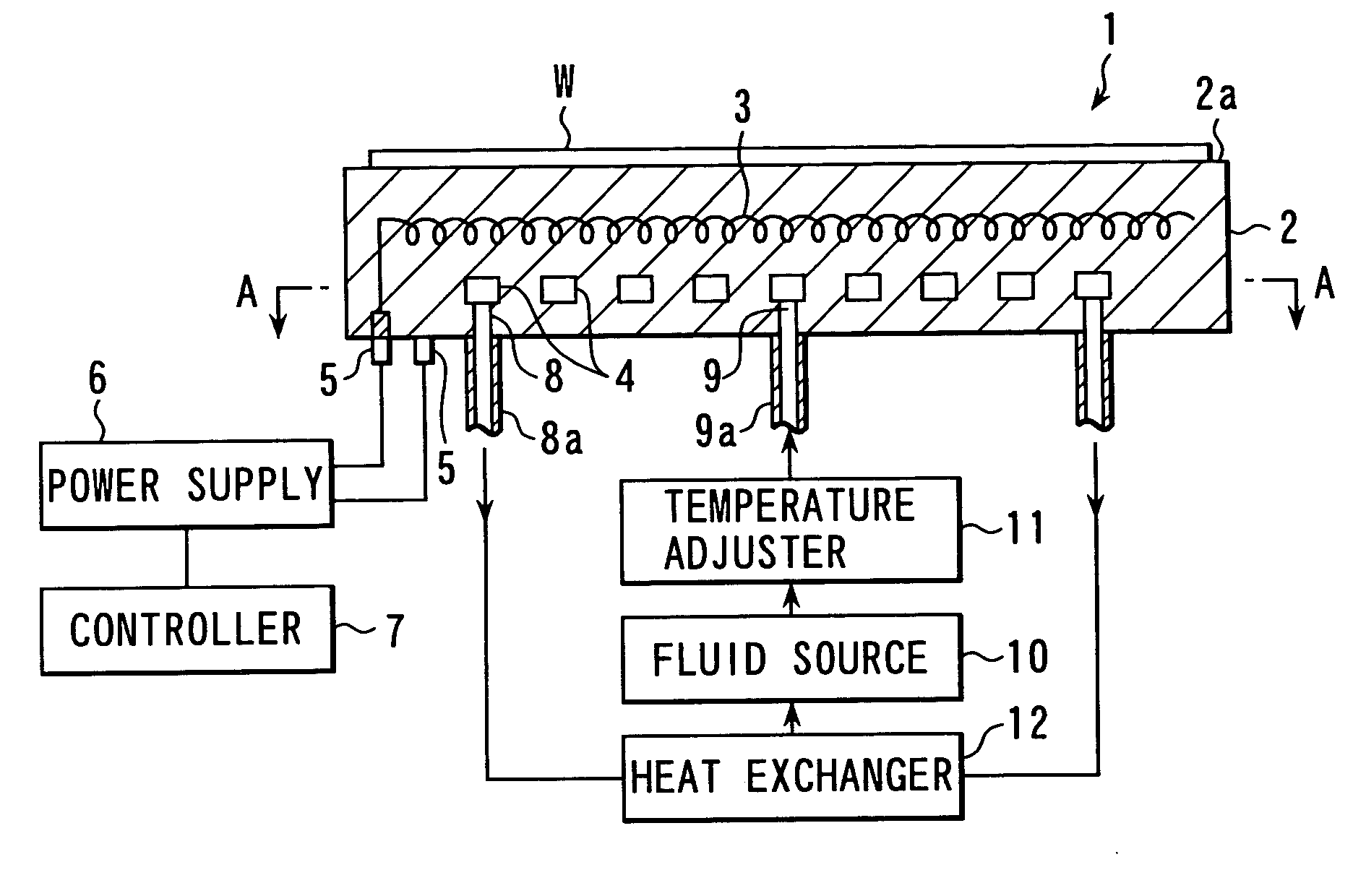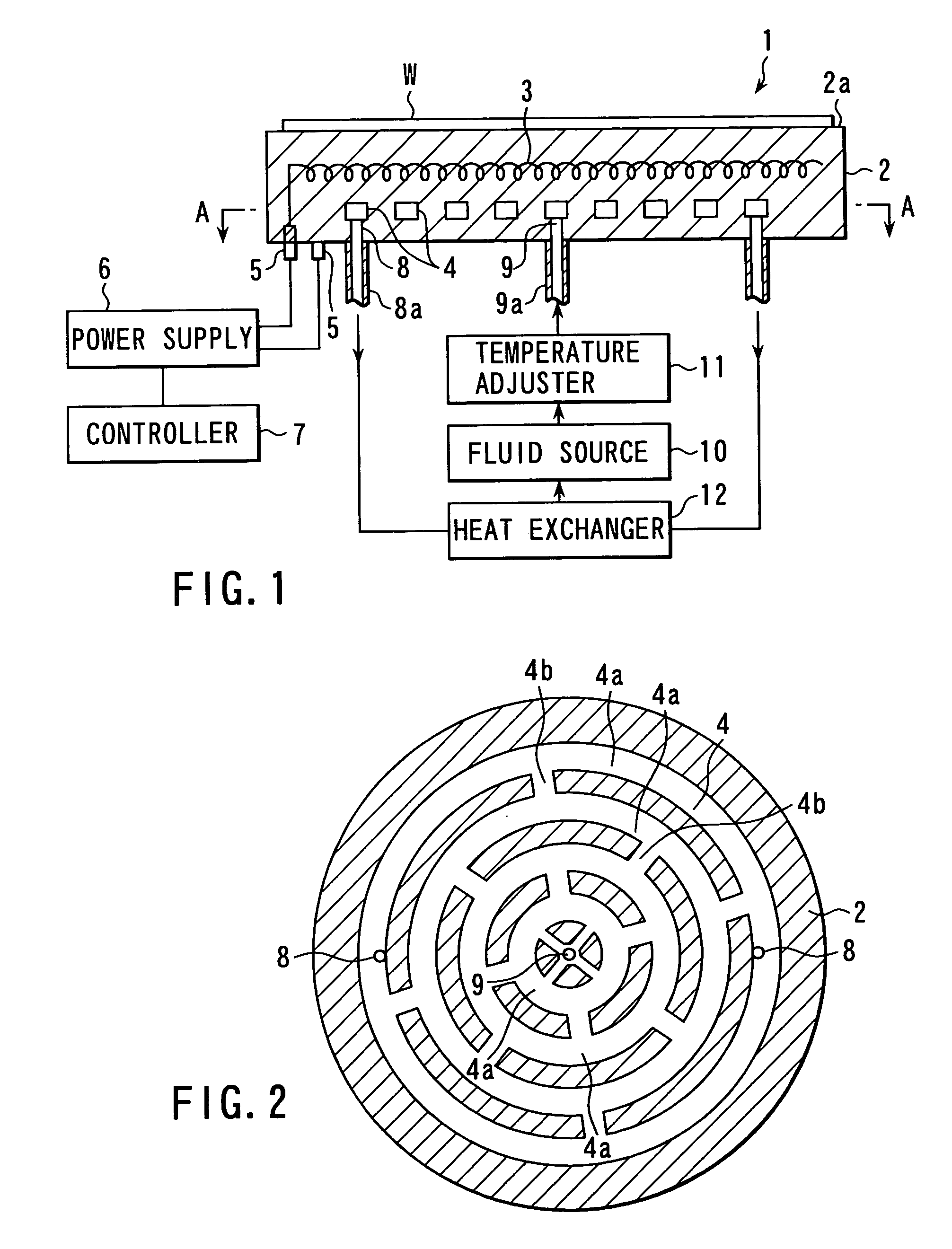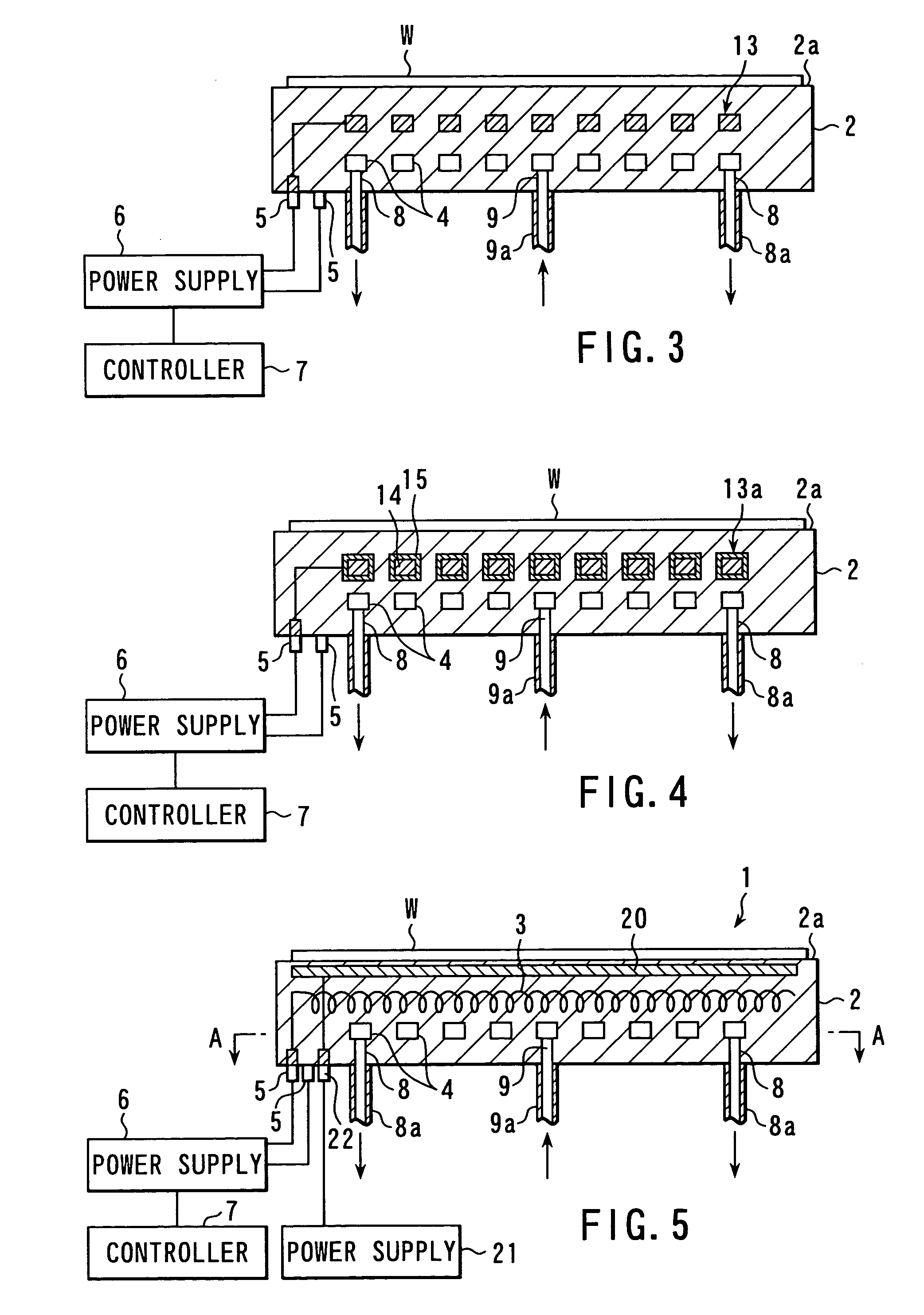Ceramic heater system and substrate processing apparatus having the same installed therein
a heater system and substrate technology, applied in the direction of ohmic resistance heating, electric heating, coatings, etc., can solve the problems of long cooling time, less heating performance of heaters, etc., to achieve high cooling efficiency and maintain high heating performance on the heating surfa
- Summary
- Abstract
- Description
- Claims
- Application Information
AI Technical Summary
Benefits of technology
Problems solved by technology
Method used
Image
Examples
first embodiment
[0034]FIG. 1 is a vertical cross-sectional view exemplarily illustrating a ceramic heater system for processing a semiconductor wafer according to the invention. FIG. 2 is a horizontal cross-sectional view taken along the line A—A in FIG. 1.
[0035]A ceramic heater system 1 has a disk-shaped heater base 2 of ceramics and a heating resistive element (heater) 3 buried in the heater base 2 in a coil form. A fluid passage 4 is provided in the heater base 2 below the heater 3.
[0036]Any dense ceramics may be used for the heater base 2. Preferable ceramics for the heater base 2 include nitride ceramics, such as silicon nitride (Si3N4), aluminum nitride (AlN) and silicon aluminum oxy nitride (SiAlON), and aluminum oxide (Al2O3). The top surface of the heater base 2 serves as a mounting surface 2a for a semiconductor wafer W.
[0037]The heater 3, which is a heat resistor, is buried in the heater base 2 in a predetermined pattern (e.g., a spiral form) with its both end portions connected to termi...
second embodiment
[0046]In the ceramic heater system of the second embodiment, a heater 13 buried in the heater base 2 is formed of graphite or glassy carbon and is arranged in a predetermined pattern (e.g., a spiral form).
[0047]In the ceramic heater system, the coefficients of thermal expansion of graphite and glassy carbon, materials for the heater 13, are respectively 2 to 3×10−6 / K and 1.5×10−6 / K to 2.5×10−6 / K, which are relatively close to the coefficient of thermal expansion of AlN of 4.6×10−6 / K, so that the heater base 2 can be used without being damaged even if the temperature is raised fast or dropped fast.
[0048]As a modification of the second embodiment shown in FIG. 4, a heater 13a having a core 14 of graphite or glassy carbon coated with a glassy BN layer 15 may be used. In this case, the glassy BN has a function of protecting the core 14 of graphite or glassy carbon and a buffer capability, thus ensuring faster temperature raising and faster temperature drop.
[0049]A ceramic heater system ...
third embodiment
[0053]In the case where a plasma treatment is carried out by using the ceramic heater of each of the above-described embodiments, a plasma-producing electrode 23 is buried in the heater base 2 as in a modification of the third embodiment shown in FIG. 6. Plasma can be produced by grounding the electrode 23 and applying high-frequency power to the opposing electrode in the vacuum atmosphere. A DC voltage is applied to the electrode provided below the counter electrode. The DC voltage functions as a bias introducing ions and flaxes into the substrate. The etching rate and the deposition rate are thereby enhanced.
[0054]High-frequency power may be applied to the electrode 23. Instead of ground the electrode 23, a DC voltage may be applied to the electrode 23 so that the electrode 23 also serves as an electrode for the electrostatic chuck.
[0055]A ceramic heater system according to the fourth embodiment of the invention will now be described with reference to FIG. 7 which shows the cross ...
PUM
| Property | Measurement | Unit |
|---|---|---|
| Temperature | aaaaa | aaaaa |
| Electric potential / voltage | aaaaa | aaaaa |
| Metallic bond | aaaaa | aaaaa |
Abstract
Description
Claims
Application Information
 Login to View More
Login to View More - R&D
- Intellectual Property
- Life Sciences
- Materials
- Tech Scout
- Unparalleled Data Quality
- Higher Quality Content
- 60% Fewer Hallucinations
Browse by: Latest US Patents, China's latest patents, Technical Efficacy Thesaurus, Application Domain, Technology Topic, Popular Technical Reports.
© 2025 PatSnap. All rights reserved.Legal|Privacy policy|Modern Slavery Act Transparency Statement|Sitemap|About US| Contact US: help@patsnap.com



